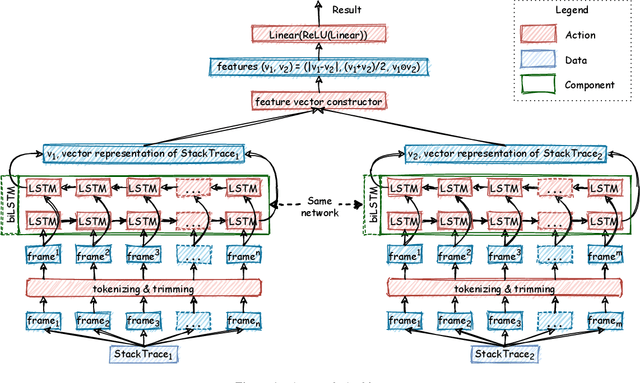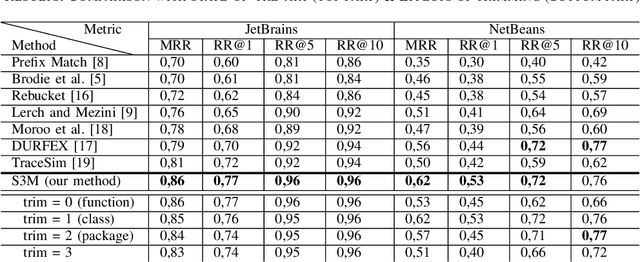S3M: Siamese Stack (Trace) Similarity Measure
Paper and Code
Mar 18, 2021


Automatic crash reporting systems have become a de-facto standard in software development. These systems monitor target software, and if a crash occurs they send details to a backend application. Later on, these reports are aggregated and used in the development process to 1) understand whether it is a new or an existing issue, 2) assign these bugs to appropriate developers, and 3) gain a general overview of the application's bug landscape. The efficiency of report aggregation and subsequent operations heavily depends on the quality of the report similarity metric. However, a distinctive feature of this kind of report is that no textual input from the user (i.e., bug description) is available: it contains only stack trace information. In this paper, we present S3M ("extreme") -- the first approach to computing stack trace similarity based on deep learning. It is based on a siamese architecture that uses a biLSTM encoder and a fully-connected classifier to compute similarity. Our experiments demonstrate the superiority of our approach over the state-of-the-art on both open-sourced data and a private JetBrains dataset. Additionally, we review the impact of stack trace trimming on the quality of the results.
 Add to Chrome
Add to Chrome Add to Firefox
Add to Firefox Add to Edge
Add to Edge